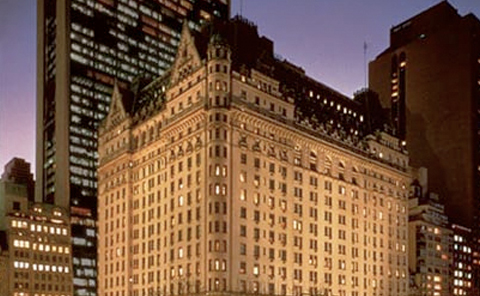Since it’s opening, in 1907, the Plaza has been one of the few places in New York City where ordinary citizens can wander off the street and experience a taste of luxury. The hotel’s rich history is filled with some of the world’s wealthiest and most famous faces. The Plaza shows up in forty movies and has set the scene in multiple books. But today, the Plaza is far from the enchanting playground it once was. In the New Yorkers mind, the hotel is losing its magic, fast.
Four years ago, the Israeli company El-Ad Properties purchased the Plaza. The company’s billionaire owner Isaac Tshuva, set off to convert the building into condominiums. Some of the worlds wealthiest, lined up to buy a piece of New York history. Today, the hotel is tarnished with lawsuits, tacky fiberglass moldings, and grimy carpets. Although El-Ad has made noticeable improvements to the Plaza, the complaints span far and wide. The once beautiful hotel has lost nearly all of its brilliance in the redesign and native New Yorkers are distraught at its sight.
The Plaza’s problems likely stem from Tshuva and his C.E.O., Miki Naftali. The two didn’t buy the hotel due to any emotional or romantic attachments; they nonchalantly purchased it after losing a bid on another Manhattan hotel, the Mayflower. Several months after setting his sights on it, Naftali emerged with hotel, for $675 million. He would put in another $400 million to refurbish and convert it.
The foreign developers cluelessness was displayed almost immediately. The first thing Naftali underestimated was the New York Hotel and Motel Trades Council who to this day claims that El-Ad’s original plan was to rid the hotel of all the food-service venues-the Oak Room, the Ballroom, and the Palm Court and to fire the Plaza’s 900 hotel workers. But after a $2 million “Save the Plazaa” campaign was launched, and El-Ad starting losing the public relations battle, Naftali agreed to make drastic changes to its plans. It agreed to limit the number of residences to 150. Around 350 hotel rooms would remain and 350 jobs would be saved.
The condominiums that were allowed to be built sold fast. From the moment the floor plans became available the famous and rich scooped them up, sometimes buying up to five units to combine, paying up to $6,000 a square foot. The rush to purchase was so great that the buyers couldn’t actually view their apartments in person. Questions were met with a take-it-or-leave-it attitude, forcing brokers to go outside and try to figure it out for themselves.
While the would-be residents waited and fantasized over the designs of their future residences, El-Ad took on part two of the conversion: building a 39,000-square-foot mall in the basement and filling the space with big-named luxury brands. What El-Ad failed to take in to account is that brands such as Gucci, Prada, and Louis Vuitton already had established presences on Madison and Fifth Avenues, which made opening new locations almost worthless.
Instead of choosing a well-known designer to design the inside, Tshuva chose his daughter who had never worked on such a large project before. The hotel virgin teamed up with firm Costas Kandylis, which specializes in residential towers. The project quickly became a nightmare, with many unexpected setbacks. Walkouts and lawsuits started mounting up with many fingers pointed at El-Ad.
Although a handful or residents are happy with their current living conditions at the Plaza, most are left complaining. El-Ad seems to have taken shortcuts leaving residents feeling as if they’ve been cheated. Naftali reputation is quickly disintegrating. Now, 30 apartments in the plaza are back on the market, including Hilfiger’s corner “dome” apartment and Friedrich’s “Astor Suite.” In the end, maybe some of the complaining is overstated, but El-Ad’s biggest mistake is forgetting that New Yorkers usually always get their way.





















